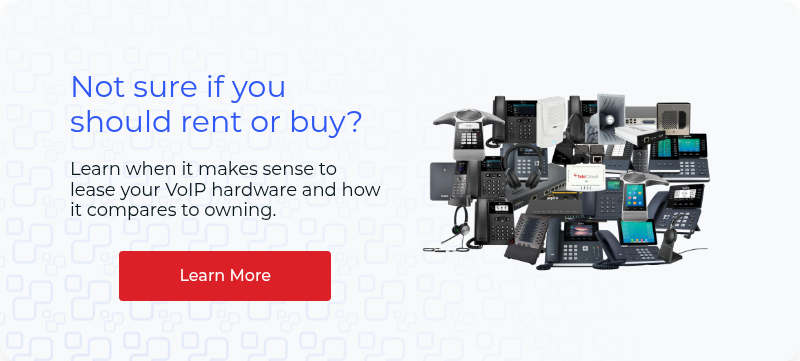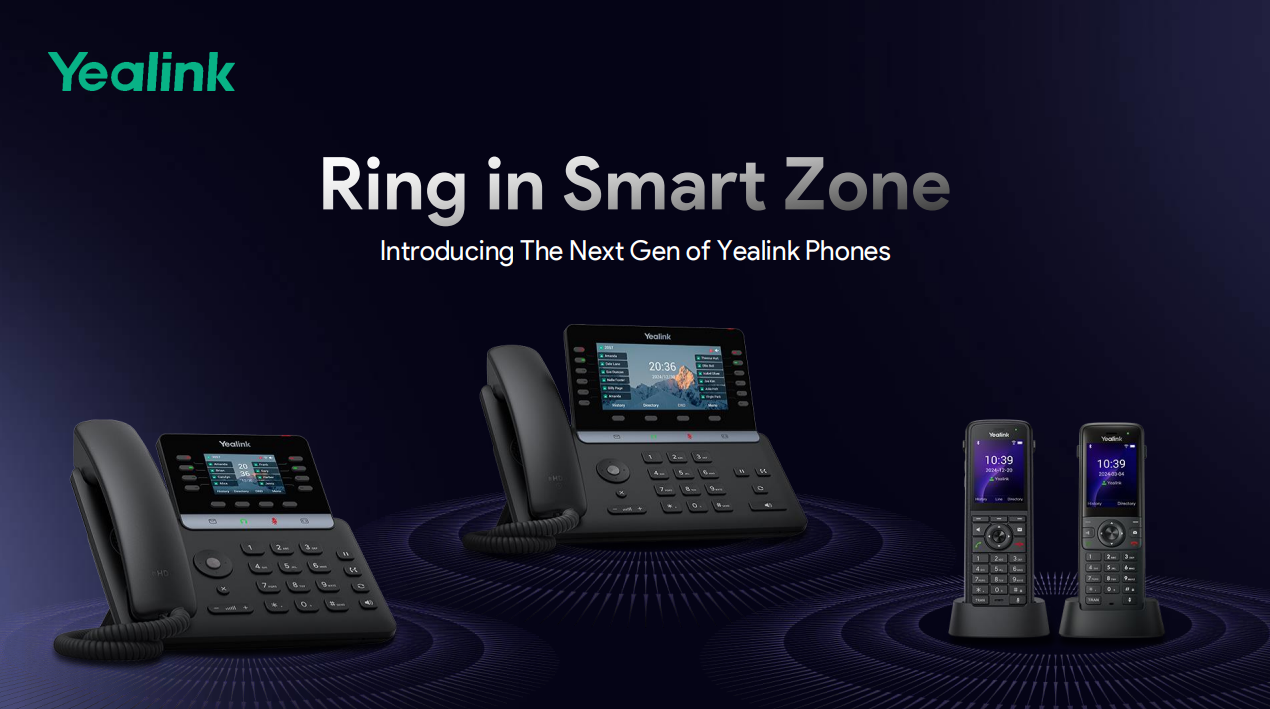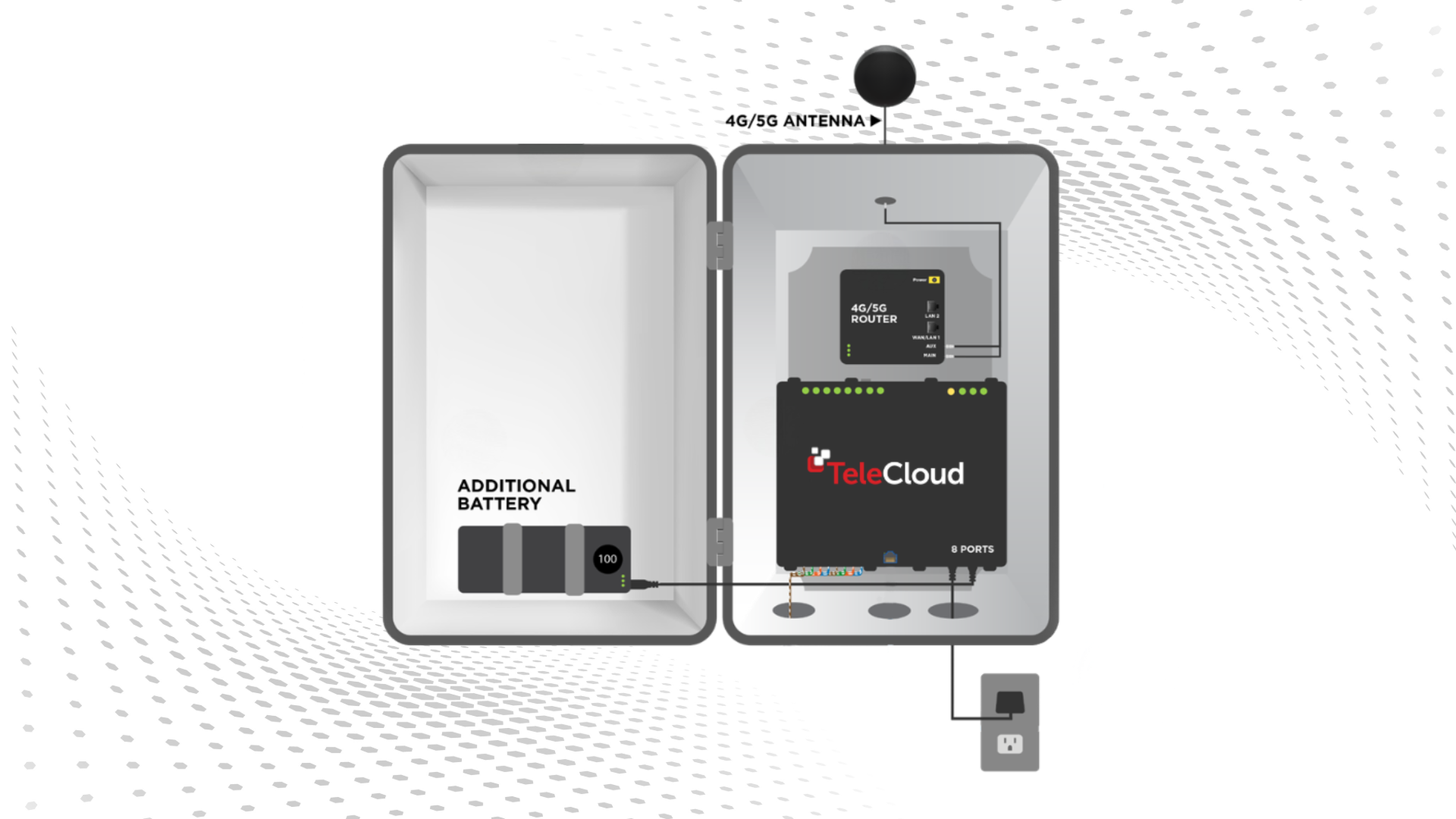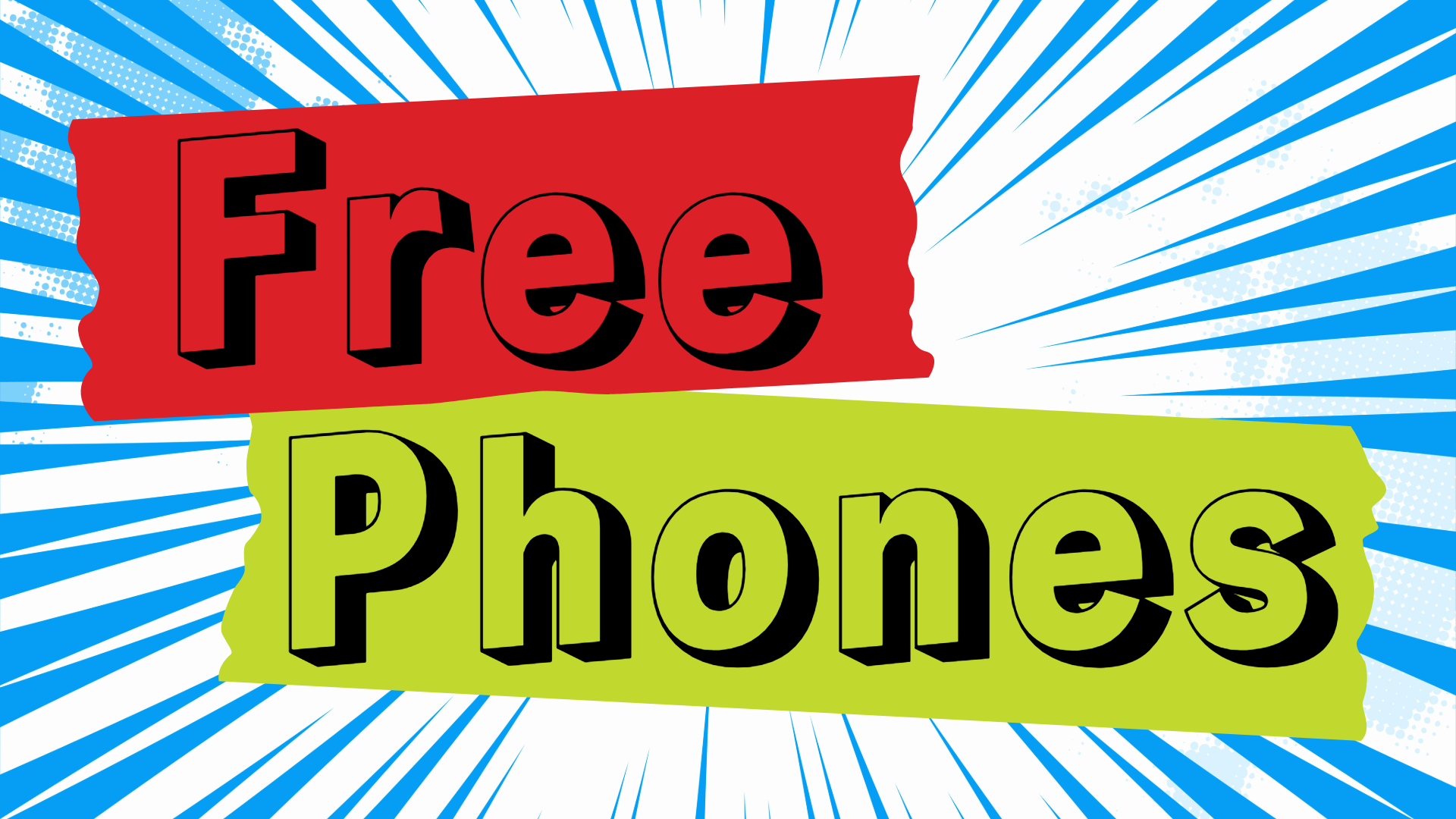
Yealink, Poly, and Grandstream are the top desk phone brands we recommend for 2025. Each delivers the right mix of quality, features, and flexibility for roles like front desk staff, executives, and hybrid teams. The right phone improves call clarity, streamlines transfers, and supports modern workflows with Wi-Fi, Bluetooth, and smart integrations.
Are you choosing the right desk phone for your team, or just the cheapest one online?
Desk phones still carry critical responsibilities: handling customer calls, managing transfers, supporting remote teams, and more. But with so many options, from Wi-Fi and Bluetooth to DECT and touchscreen models, it’s easy to get overwhelmed or pick the wrong one.
At TeleCloud, we help businesses configure thousands of desk phones every year. While Yealink is our go-to recommendation for its reliability, features, and value, we support any open SIP-compatible phone. Our list stays objective, based on real-world results, not reseller agreements, so you get recommendations that actually work across a range of business environments.
In this guide, we’ll help you understand what features actually matter, which models make the most sense for different roles, and how to avoid the most common mistakes when buying VoIP hardware.
Which Desk Phone Brands Are Best for Business in 2025?
Not all phones are created equal, and not every VoIP provider supports every brand.
For best results, stick with open SIP-compatible phones. These work across multiple platforms and offer better long-term flexibility. Here's a list of brands you’ll find in modern VoIP setups:
Stick with open SIP-compatible brands like:
Your VoIP provider can help you confirm whether a phone is compatible, but starting with a trusted, widely supported brand makes things easier from the start.
Pro tip: Avoid legacy phones from Toshiba, Avaya (pre-2015), or Mitel unless your system specifically supports them; they often use proprietary firmware.
Top 3 Desk Phone Brands We Recommend
We recommend Yealink, Poly, and Grandstream because they consistently deliver the best mix of reliability, real-world performance, and feature flexibility. These brands support a wide range of business needs, while staying compatible with most modern VoIP systems.
| Brand | Best For | Strengths | Considerations |
|---|---|---|---|
| Yealink | Most business use cases | Balanced pricing, built-in Wi-Fi/Bluetooth, strong model variety, great for hybrid work | None significant; leading choice for most environments |
| Poly | Enterprises and Microsoft Teams users | Enterprise-grade quality, TAA-certified, great Teams/Zoom integration | Fewer built-in wireless options; dongles often required |
| Grandstream | Budget-focused or bundled solutions | Low price with modern features, good bundling with networking gear, built-in Wi-Fi/Bluetooth | UI/design not as refined; best fit for cost-conscious setups |
Yealink – Best All-Around Desk Phone Line
Yealink delivers the best balance of price, performance, and features:
- A wide variety of models for every use case
- Built-in Wi-Fi and Bluetooth on flagship models
- Excellent audio and durability
- Great for both office and remote work
Poly (Polycom) – Trusted, Enterprise-Grade Build
Poly phones are known for top-tier call quality and reliability:
- TAA-certified and trusted by government and enterprise sectors
- Especially strong in Zoom and Microsoft Teams ecosystems
- Fewer options with built-in wireless, expect to use dongles
Grandstream – Budget-Friendly Flexibility
If you're outfitting a new office or looking to stay lean:
- Modern UI and high-end features at a lower price
- Often includes Wi-Fi and Bluetooth out of the box
- Integrates well with Grandstream routers and switches
What Are the Most Important Desk Phone Features for Businesses?
Not every user needs every feature, but here are the most important ones to consider:
- Display type: Monochrome vs. color, touchscreen vs. physical buttons
- Connectivity: Built-in Wi-Fi and Bluetooth (or support via dongles)
- Programmable keys: For speed dial, call transfer, or monitoring other lines
- USB ports: Especially if you’re using Wi-Fi or Bluetooth dongles
- Adjustability: Tilting screens and stands improve visibility and usability
- Conference call support: 3-way or 10-way? Depends on the user.
- Headset compatibility: Especially important for sales and support roles
- Add-on module support: More buttons = more control for power users
The rest depends on your role and use case. A receptionist has different needs than a sales rep, and a warehouse worker doesn’t need the same phone as the CEO.
Yealink Desk Phone Models and Who They’re Best For
Yealink phones are known for their flexibility and ease of use. Here’s how their lineup breaks down:
Entry-Level: T30 / T33G
- Basic, wired phones with minimal features
- Best for common areas, break rooms, or very light users
Mid-Tier: T43U, T46U, T48U, T53W
- Color or monochrome screens
- Support for Wi-Fi/Bluetooth via dongles
- Great for everyday office users needing programmable keys
Flagship Tier: T54W / T57W
- Built-in Wi-Fi and Bluetooth, no dongles needed
- Color screen, adjustable stand, and excellent call quality
- Ideal for executives, hybrid users, or anyone needing premium functionality
Mobile / Cordless: Yealink DECT or Wi-Fi Phones
- Great for warehouse workers, floor staff, or mobile users
- Reliable mobility without running Ethernet
Poly Desk Phones: Modern but Specialized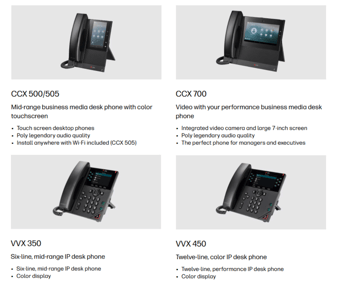
Poly (now owned by HP) still makes excellent hardware, though the focus has shifted toward integrated ecosystems like Zoom and Microsoft Teams.
CCX Series: 500/505 / 700
- Sleek, touchscreen-only interface (no physical buttons)
- Great for clean office aesthetics—but not ideal for high-transfer users
- Best for Microsoft Teams / Zoom users
VVX 350 / 450
- More traditional with programmable buttons
- Known for voice quality and government-level certifications
- Bluetooth and Wi-Fi require separate dongles
Grandstream Phones: Budget-Friendly with Flexibility
Grandstream offers great value, especially for businesses that are also buying network gear.
GXP2170 / GXP2135
- Full-featured, mid-range phones with color displays
- Often include built-in Wi-Fi and Bluetooth
- Strong option if you’re bundling phones with Grandstream switches or APs
How Much Do Desk Phones Cost?
Most modern business desk phones fall in the range of $150 to $300 per device, depending on brand, features, and wireless capabilities. Higher-end models with touchscreens or built-in Wi-Fi/Bluetooth can lean toward the upper end, while entry-level models may cost less.
But here’s something many businesses don’t realize: you don’t have to buy phones outright.
Why You Should Consider Renting Your Desk Phones
For most businesses, especially those growing or upgrading systems, renting phones is a smarter and more flexible option.
With a rental agreement, you can expect to pay around $3–$10 per phone per month. And the best part? If a phone breaks or becomes outdated, your provider will replace it. No repair fees. No scrambling for parts. No sunk cost when models evolve.
It’s a budget-friendly way to:
- Avoid large upfront investments
- Future-proof your hardware
- Simplify support and replacement
Whether you're adding 5 new users or rolling out 50 across locations, rental ensures your team always has the right equipment without the long-term burden.
Matching the Right Business Desk Phone to the Right Role (2025 Edition)
|
Role / Use Case |
Recommended Phone Model(s) |
Key Features Needed |
Why It Works |
|
Receptionist / Front Desk |
Yealink T46U + Expansion Module Poly VVX 450 + Sidecar |
10–20+ programmable keys, backlit display, headset support |
Quick call transfers, visual line monitoring, and fast directory access are mission-critical |
|
Executive / Leadership |
Yealink T54W or T58 Poly CCX 600 Series |
Multi-way conferencing, color screen, built-in Wi-Fi & Bluetooth, adjustable display |
High-performance audio, call mobility, and an elegant interface for top-tier users |
|
Sales Teams |
Yealink T53W / T54W Grandstream GXP2135 |
Built-in Bluetooth for headsets, Wi-Fi for hybrid flexibility, call logging |
Wireless headset pairing and remote flexibility reduce fatigue and support fast-paced workflows |
|
Remote / Hybrid Workers |
Yealink T53W / T54W |
Built-in Wi-Fi, plug-and-play setup, web portal access |
Reliable performance at home with minimal IT involvement, no hardwiring required |
|
Warehouse / Field Staff |
Yealink W73P / W79P DECT Yealink Wi-Fi Handsets |
Cordless mobility, long battery life, belt-clip support |
Enables staff to roam large areas while staying connected, ideal for paging and quick response |
|
Real Estate Professionals |
Yealink T54W or DECT Phones |
Wi-Fi for offsite use, Bluetooth for mobile headsets, compact form factor |
Perfect for agents in shared offices or on-the-go who need mobile desk functionality |
|
Medical / Dental Offices |
Yealink T54W Poly VVX 450 |
Secure, HIPAA-compliant routing; visual voicemail; headset compatibility |
Supports efficient front-desk call handling and fast routing to different departments or providers |
|
Customer Support Teams |
Yealink T46U Grandstream GXP2170 |
Multiple programmable keys, built-in analytics support, headset integration |
Fast queue response and real-time call data access help reps work smarter and handle higher volumes |
|
Call Center Supervisors |
Yealink T48U + Sidecar Poly VVX EM50 |
Call monitoring, whisper/barge, queue management features |
Ideal for managing agent performance, queue health, and real-time adjustments |
|
IT / Tech Admins |
Grandstream GXP2170 Yealink T53W |
Multi-line support, user-friendly admin interface, USB ports for accessories |
Useful for provisioning, testing, and managing multiple extensions with minimal effort |
Common Mistakes to Avoid When Buying Business Phones
Mistake #1: Buying Based on Price Alone
- Not all phones are compatible with your VoIP provider.
- Cheap, unsupported models may not support call transfer, recording, or analytics features.
Mistake #2: Ignoring Long-Term Needs
- A phone without Wi-Fi today might be a problem in a future remote or shared office setup.
- Don’t forget about accessories (dongles, headsets, expansion modules).
Mistake #3: Buying Old IP Phones
- Legacy IP phones from brands like Avaya, Toshiba, or Mitel may look fine, but often use proprietary tech and won’t work well or at all with modern systems.
Pro Tip: Ask Your Provider Why They Recommend a Specific Model
- They should be able to clearly explain how that device fits your specific needs.
Bonus Tips Before You Buy
- Confirm with your VoIP provider that the phone is supported
- Ask if you’ll need dongles for Wi-Fi or Bluetooth
- Consider expansion modules for reception desks
- Choose vendors that offer post-sale support and training (like TeleCloud)
What’s the Best Business Desk Phone in 2025?
If we had to pick just one, the Yealink T54W is our top all-around recommendation. It’s flexible, future-proof, and packed with the features most teams actually use: built-in Wi-Fi and Bluetooth, a bright color screen, and programmable buttons for fast, seamless workflows. Whether you’re at the office, working remotely, or bouncing between both, it just works.
But the real answer? The best desk phone is the one that fits your team’s daily needs. A receptionist has different priorities than a field tech. Executives want conferencing power, while salespeople need hands-free Bluetooth access. Getting it wrong means slower calls, frustrated users, and wasted budget.
Let’s Find the Desk Phone You’ll Actually Love Using
Everyone loves the feeling of finding that perfect item, the one that fits just right, works how you need it to, and makes your day easier. Choosing a desk phone is no different. Whether you’re all about buttons, built-in Bluetooth, or budget flexibility, we’ll help you match the right phone to your team and how they work.
Ready to find your perfect fit? Talk to a VoIP hardware expert, no pressure, just helpful guidance.
Commonly Asked Desk Phone Questions
Can I use any IP phone with my VoIP provider?
Not always. Many IP phones are locked or use proprietary systems. Always check compatibility first.
Do I need Wi-Fi and Bluetooth in a desk phone?
It depends. If you're remote, hybrid, or using headsets, yes, these features make life much easier.
What’s the difference between DECT and Wi-Fi phones?
DECT is like old cordless phones, great range, but requires a base station. Wi-Fi phones connect to your Wi-Fi network. Both are good for mobile or warehouse workers.
How many programmable buttons should I look for?
It depends on the role. Receptionists or support reps often need 10+ buttons for fast transfers and line monitoring. Standard users may only need a few. Expansion modules are available for power users who need even more.
Can I mix different phone brands in one office?
Yes, if your provider supports open SIP, you can mix brands like Yealink and Grandstream. However, using the same brand often simplifies setup, training, and future support.
Can desk phones work with Microsoft Teams or Zoom?
Certain models, like Poly’s CCX series, are optimized for Teams and Zoom. Others can still integrate through third-party tools or softphone apps, but check compatibility first.
Will I still get support after installation?
Absolutely. With TeleCloud, training and support continue long after go-live. We help with user changes, routing updates, device replacements, and ongoing feature adoption so you’re never left figuring things out on your own.
Topics:

